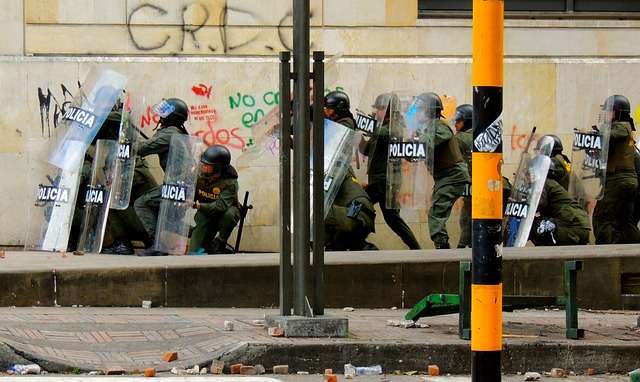
On 11 May, the Mekong River Commission (MRC) announced that the proposed Sanakham hydropower project in Laos will undergo the MRC’s Prior Consultation process.[1] Sanakham is the sixth mainstream dam to be submitted for Prior Consultation.
The proposed Sanakham dam is expensive, unnecessary and risky – and should be cancelled. The 684-megawatt (MW) dam would cost over $2 billion and take eight years to build. If averaged out over eight years, the Sanakham dam would be adding 90 MW a year, which pales in comparison to the installation of more sustainable energy options being rolled out in the region. For example, between April and July 2019, neighbouring Vietnam added 4,400 MW from solar,[2] which is more than six times the installed capacity of Sanakham dam.
With the rapidly changing landscape in power sector technologies and investments, there is a risk that large hydropower projects like Sankham dam, which take several years to build and require majority of financing up-front, will become stranded assets. Risks are compounded by climate change and existing hydropower projects upstream, which are making water flows and levels more unpredictable, which in turn will impact on the amount of electricity generated by Sanakham and other mainstream dams.
Most of the electricity generated by Sanakham dam is slated for export to Thailand. However, Thailand has a major over-supply of electricity, which has increased even more due to the economic fall-out from the COVID-19 pandemic. The COVID-19 pandemic has also highlighted the importance of the Mekong’s farmlands, forests, rivers, wetlands and fisheries as a safety net during times of crisis. Local people’s continued access to rivers and natural resources are critical to ensuring a more healthy and equitable recovery from the pandemic.
Despite the proposed Sanakham dam site being on the Mekong mainstream, about two kilometres upstream of the Thai-Lao border, there’s been no serious consideration of – let alone meaningful consultations on – the project’s transboundary impacts. Large sections of Sanakham’s Transboundary Environmental and Social Impact Assessment and Cumulative Impact Assessment (TBESIA/CIA)[3] are outdated and plagiarised from the Pak Lay TBESIA/CIA. For example, the chapters on Public Involvement, Conclusion and Recommendations sections are the same as Pak Lay TBESIA/CIA, with the only real difference being the name of the project. The TBESIA/CIA makes little to no reference to multiple studies about the Mekong and impacts of hydropower published in the last ten years.[4] For a project that would impact a major transboundary river upon which millions rely, this is unacceptable.
Rather than proceeding with yet another flawed ‘consultation’ process, we call for the Sanakham and other planned Mekong mainstream dams to be cancelled. Save the Mekong coalition urges lower Mekong governments and the MRC to:
- Address outstanding concerns regarding the impacts of existing dams.
- Conduct a participatory and comprehensive energy options assessment and prioritise timebound steps towards a just energy transition that maintains the Mekong’s critical ecosystems while meeting and safeguarding the needs of communities in the region.
- Address outstanding concerns on the Prior Consultation process.
Address outstanding concerns on impacts of existing dams
Dams already built on the Lancang-Mekong and its tributaries are having major and cumulative impacts on the environment and riparian communities, including across borders. Yet, existing problems, including transboundary implications, loss of livelihoods, land and lives remain largely unaddressed;[5] and commitments by the Lao government to reconsider hydropower strategy following the 2018 Xe Pian-Xe Namnoy dam collapse, not implemented.
Instead of proceeding with more mainstream dams under the guise of ‘sustainable hydropower’ and unproven mitigation measures, governments, developers and financiers must prioritise addressing the impacts of existing dams to improve the lives and well-being of affected communities.
Conduct a participatory comprehensive energy options assessment and prioritise just energy transitions
Mekong mainstream dams are not needed to meet the region’s energy and water needs. Thailand, which has been identified as the buyer for much of electricity from mainstream dams has a large reserve margin. In April, the Thai Energy Ministry indicated that the reserve margin in 2020 could be as high as 40%, which equates to approximately 18,000 MW.[6] This is significantly higher than the combined installed capacity of all the Lower Mekong mainstream dams. In March 2020, Cambodia announced that it would suspend the proposed Sambor and Stung Treng dams for at least 10 years.[7]
Now is the time to cancel the Mekong mainstream dams permanently and prioritise sustainable and equitable energy options and pathways that respect the rights of communities. The region’s huge potential for energy efficiency and sustainable non-hydro renewables, coupled with the rapid advances in – and falling costs of – generation, transmission and storage technologies, can help realise energy access and security for people and economies of the region, without destroying the rivers and natural resources. Furthermore, energy efficiency measures and non-hydro renewables can be deployed more widely, quickly and with less cost than centralised large-scale hydropower projects.
Instead of spending valuable funds on another flawed Prior Consultation process, resources should be directed towards conducting a participatory and comprehensive energy options assessment that can identify and help deliver more economic, sustainable and equitable energy futures. Such an assessment should prioritise just energy transitions. This means ensuring non-resource intensive changes in the ways that energy is developed, produced, distributed and consumed to safeguard people’s rights and the environment.
Address outstanding concerns on Prior Consultation process
Save the Mekong has repeatedly raised concerns over and pointed to serious flaws in Prior Consultation processes.[8] Concerns and requests by civil society, MRC member governments and Development Partners, including calls for further studies and information, remain largely unaddressed.
We reiterate our position in the October 2019 statement that “…without substantial reform, there is little indication that a new Prior Consultation process … will be any different from past experience or that it will be able to ensure minimum standards of transparency and accountability, let alone meaningful participation for affected communities, civil society and the general public.”[10]
Save the Mekong Coalition
2 June 2020
[1] See MRC Media release, 11 May 2020, ‘Laos to undertake prior consultation for Sanakham hydropower project’
[2] See ‘Update Vietnam Power Sector’, presentation at the 26th Meeting of the Regional Power Trade Coordination Committee (RPTCC-26), Hanoi, November 2019
[3] See Sankaham Hydropower Project, ‘Transboundary Environmental and Social Impact Assessment and Cumulative Impact Assessment’, October 2018
[4] These include but are not limited to: MRC Technical review reports of mainstream dams submitted to Prior Consultation; the findings and recommendations of the 2010 Strategic Environmental Assessment of Hydropower on the Mekong Mainstream; the findings and recommendations of the MRC Council Study etc, which are available through the MRC website
[5] E.g. See: Lao dam disaster: UN rights experts call for justice two years on (29 April 2020)
[6] Thailand’s installed capacity is approx. 45,000MW; 40% is 18,000MW
[7] https://www.theguardian.com/world/2020/mar/20/cambodia-scraps-plans-for-mekong-hydropower-dams
[8] E.g see Save the Mekong coalition statements issued in: May 2017 (Pak Beng dam); July and August 2018 (Pak Lay); and October 2019 (Luang Prabang dam)
[9] Mekong River Commission (2019: 44), Comprehensive Summary: Technical Review Report – Prior Consultation for the Proposed Pak Lay Hydropower Project.
[10] Save the Mekong Coalition Calls for the Cancelation of the Luang Prabang Dam, 9 October 2019









